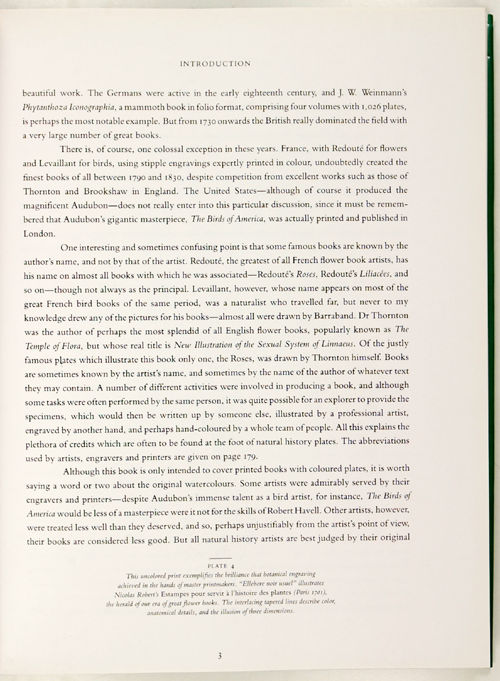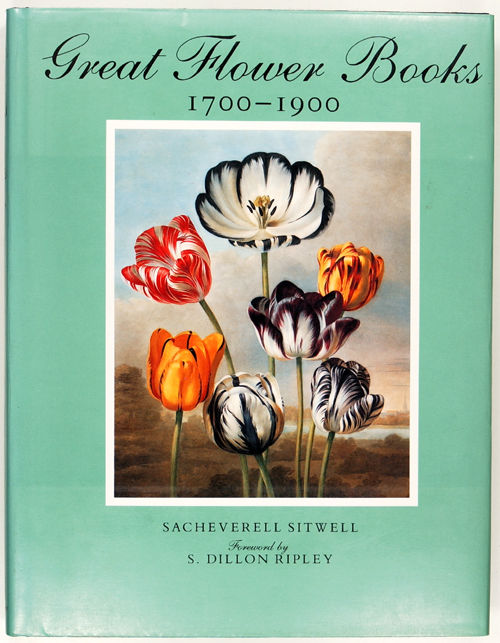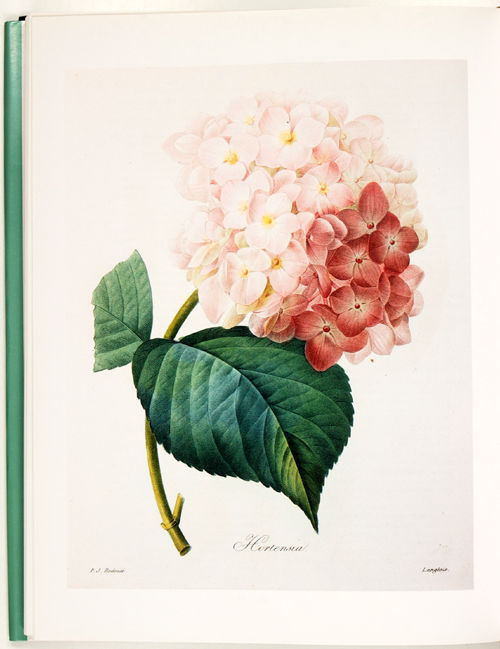Detail book
Great flower books 1700 - 1900. A bibliographical record of two centuries of finely-illustrated flower books. By Sacheverell Sitwell and Wilfrid Blunt.
Repertori Botanica
![]() We are indebted to Sir Sacheverell Sitwell for this precious compendium of botanical illustrations, collected from the most beautiful books published in Europe from 1700 to 1900.
There are 51 full page colour illustrations, realized by the best authors, lithographers and painters of the time. It gives us the impression of a bibliographical guide centred on the most precious pieces of botanical iconography: "miracles of human taste and skill".
In the introduction the English bookseller Handasyde Buchanan lists all printing techniques, from hand-coloured copper engravings painted with watercolours, to aquatint, mezzotint and the first coloured prints. In 1830 the use of lithography began to spread, but the plates were still hand-coloured.
Colour prints date back to the end of the 19th century and were introduced thanks to a new printing technique, the chromolithography.
Between 1700 and 1900 the study of botany is directly correlated to natural history.
Following the technique used by Dutch colonists, the scholar and painter Maria Sibilla Merian realized a series of superb plates called Metamorphosis insectorum surinamensis, characterised by the sublime delicacy of her strokes in drawing plants with fruits and her accuracy in the representation of insects. Plate n°3 (attached) is an example of spectacular iconography.
In Germany, the complete and colossal work Phytanthoza Iconographia, realised in 1735 by W. Weinmann with its 1026 botanical images (see attachment) and the hundred Plantae selectae by Christoph Trew were a source of great astonishment.
The painter Redoutè, with his amazing images of roses triumphed in France and his works were published in various editions during the first two decades of the 19th century.
Also very famous is the Collection precieuse by Pierre Buc’hoz, of which we have included an image of a peony with a butterfly.
In England the British Herbal by John Edwards (1769) and The Temple of Flora by Robert Thornton (1799) had such success that there were never enough copies to meet enthusiasts’ demand.
Sir Sacheverell Sitwell carefully analyses the techniques used in colouring flowers, starting from medieval miniatures to the new techniques used by his contemporaries.
His co-author Wilfred Blunt then mentions the painters and engravers from these two centuries who created such masterpieces of iconography.
We are indebted to Sir Sacheverell Sitwell for this precious compendium of botanical illustrations, collected from the most beautiful books published in Europe from 1700 to 1900.
There are 51 full page colour illustrations, realized by the best authors, lithographers and painters of the time. It gives us the impression of a bibliographical guide centred on the most precious pieces of botanical iconography: "miracles of human taste and skill".
In the introduction the English bookseller Handasyde Buchanan lists all printing techniques, from hand-coloured copper engravings painted with watercolours, to aquatint, mezzotint and the first coloured prints. In 1830 the use of lithography began to spread, but the plates were still hand-coloured.
Colour prints date back to the end of the 19th century and were introduced thanks to a new printing technique, the chromolithography.
Between 1700 and 1900 the study of botany is directly correlated to natural history.
Following the technique used by Dutch colonists, the scholar and painter Maria Sibilla Merian realized a series of superb plates called Metamorphosis insectorum surinamensis, characterised by the sublime delicacy of her strokes in drawing plants with fruits and her accuracy in the representation of insects. Plate n°3 (attached) is an example of spectacular iconography.
In Germany, the complete and colossal work Phytanthoza Iconographia, realised in 1735 by W. Weinmann with its 1026 botanical images (see attachment) and the hundred Plantae selectae by Christoph Trew were a source of great astonishment.
The painter Redoutè, with his amazing images of roses triumphed in France and his works were published in various editions during the first two decades of the 19th century.
Also very famous is the Collection precieuse by Pierre Buc’hoz, of which we have included an image of a peony with a butterfly.
In England the British Herbal by John Edwards (1769) and The Temple of Flora by Robert Thornton (1799) had such success that there were never enough copies to meet enthusiasts’ demand.
Sir Sacheverell Sitwell carefully analyses the techniques used in colouring flowers, starting from medieval miniatures to the new techniques used by his contemporaries.
His co-author Wilfred Blunt then mentions the painters and engravers from these two centuries who created such masterpieces of iconography.






















